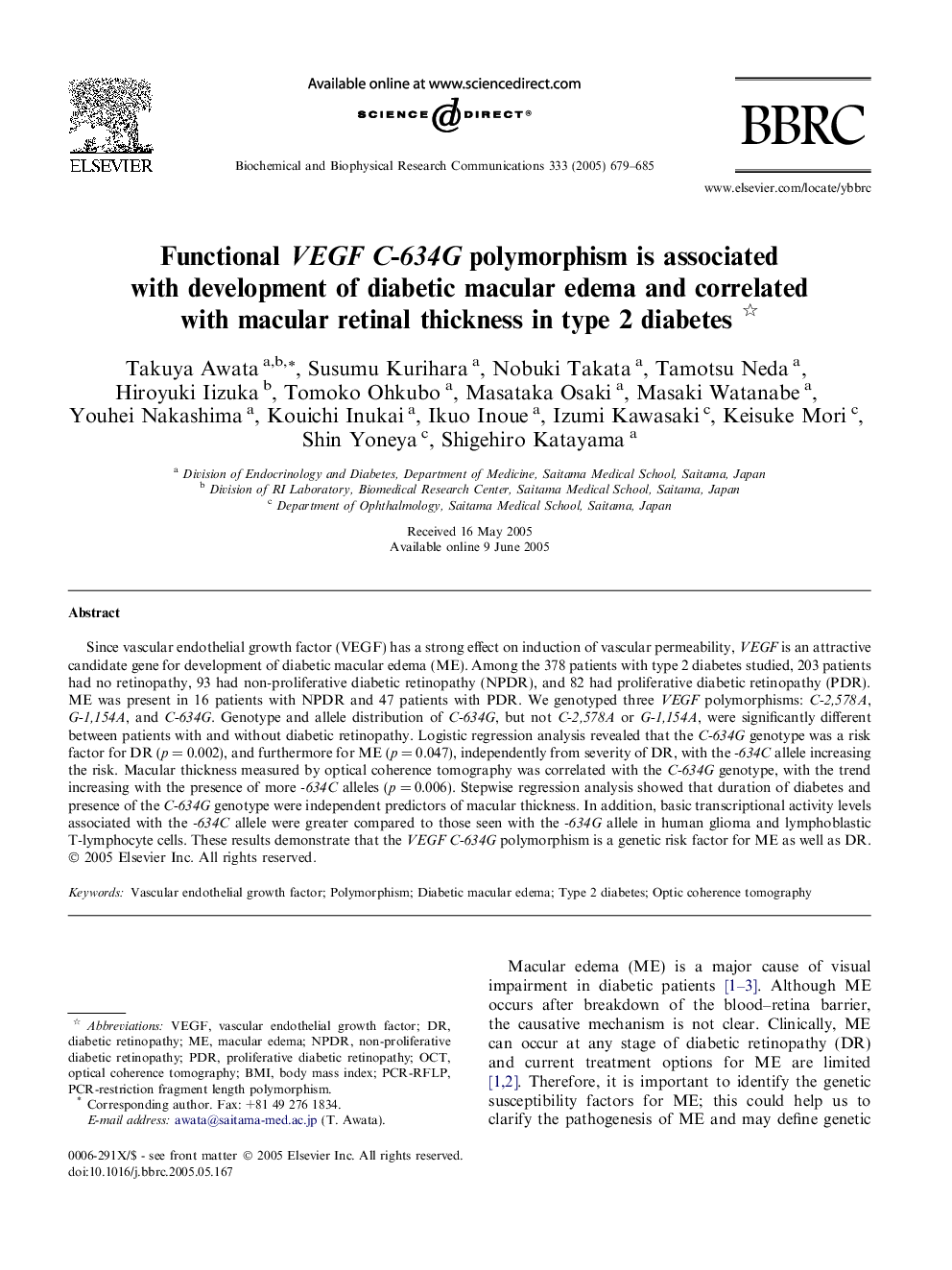| Article ID | Journal | Published Year | Pages | File Type |
|---|---|---|---|---|
| 10769743 | Biochemical and Biophysical Research Communications | 2005 | 7 Pages |
Abstract
Since vascular endothelial growth factor (VEGF) has a strong effect on induction of vascular permeability, VEGF is an attractive candidate gene for development of diabetic macular edema (ME). Among the 378 patients with type 2 diabetes studied, 203 patients had no retinopathy, 93 had non-proliferative diabetic retinopathy (NPDR), and 82 had proliferative diabetic retinopathy (PDR). ME was present in 16 patients with NPDR and 47 patients with PDR. We genotyped three VEGF polymorphisms: C-2,578A, G-1,154A, and C-634G. Genotype and allele distribution of C-634G, but not C-2,578A or G-1,154A, were significantly different between patients with and without diabetic retinopathy. Logistic regression analysis revealed that the C-634G genotype was a risk factor for DR (p = 0.002), and furthermore for ME (p = 0.047), independently from severity of DR, with the -634C allele increasing the risk. Macular thickness measured by optical coherence tomography was correlated with the C-634G genotype, with the trend increasing with the presence of more -634C alleles (p = 0.006). Stepwise regression analysis showed that duration of diabetes and presence of the C-634G genotype were independent predictors of macular thickness. In addition, basic transcriptional activity levels associated with the -634C allele were greater compared to those seen with the -634G allele in human glioma and lymphoblastic T-lymphocyte cells. These results demonstrate that the VEGF C-634G polymorphism is a genetic risk factor for ME as well as DR.
Keywords
Related Topics
Life Sciences
Biochemistry, Genetics and Molecular Biology
Biochemistry
Authors
Takuya Awata, Susumu Kurihara, Nobuki Takata, Tamotsu Neda, Hiroyuki Iizuka, Tomoko Ohkubo, Masataka Osaki, Masaki Watanabe, Youhei Nakashima, Kouichi Inukai, Ikuo Inoue, Izumi Kawasaki, Keisuke Mori, Shin Yoneya, Shigehiro Katayama,
